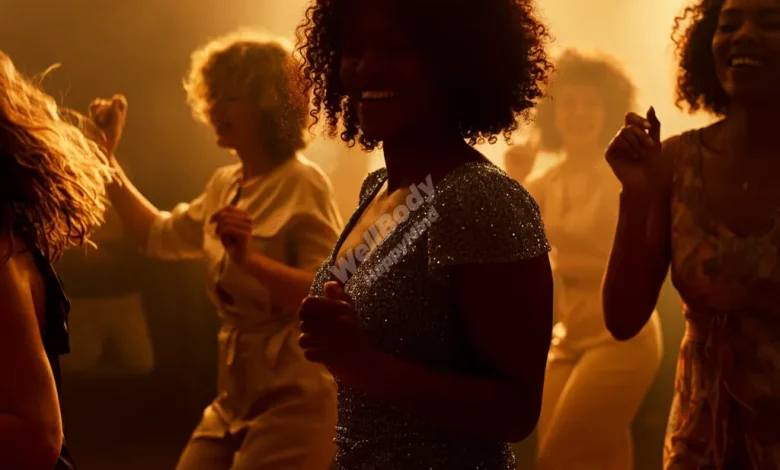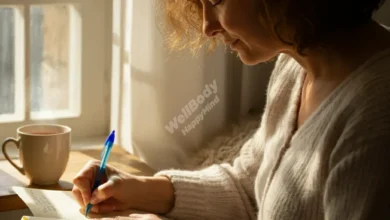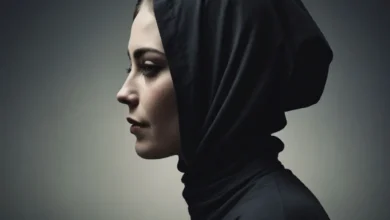Dance and Joy: The Movement Connection

Dance: Your Ticket to Joy and Well-being
Have you ever noticed how a simple shimmy or twirl can instantly lift your mood? It’s not just your imagination – there’s a powerful connection between dance and happiness that science is beginning to unravel. In this post, we’ll explore how the magic of movement can transform your mental and physical well-being, one step at a time.
Picture this: You’re swaying to your favorite tune, feeling the rhythm in your bones, and suddenly, a smile spreads across your face. That’s the dance-joy connection in action! But what’s really happening behind the scenes in your body and brain? Let’s dive into the fascinating science that explains why dancing feels so good.
The Science Behind Dance and Happiness
When you dance, your body becomes a natural happiness factory. Here’s what happens:
- Endorphin Rush: Your brain releases a cocktail of feel-good chemicals, including endorphins, which act as natural painkillers and mood elevators.
- Serotonin Boost: Dancing increases serotonin levels, often called the “happiness hormone,” which helps regulate mood and social behavior.
- Dopamine Surge: The reward center in your brain lights up, releasing dopamine, which creates feelings of pleasure and satisfaction.
But the benefits don’t stop there. Dancing also has profound effects on your brain and body:
- Brain Plasticity: Regular dancing can improve cognitive function and even increase the volume of your hippocampus, the brain area responsible for memory and learning.
- Stress Reduction: The rhythmic movement in dance can lower cortisol levels, helping to reduce stress and anxiety.
- Physical Health: Dancing is a full-body workout that improves cardiovascular health, balance, and coordination, contributing to overall well-being.
A study published in the New England Journal of Medicine found that dancing can reduce the risk of dementia by a whopping 76% – more than reading or doing crossword puzzles!
The Movement-Joy Connection
The link between movement and joy isn’t just anecdotal. Researchers at the University of Derby found that participants in a dance program reported significant improvements in mood and a reduction in depression symptoms. This suggests that the simple act of moving your body to music can be a powerful tool for emotional well-being.
As we continue to explore the world of dance and its impact on happiness, you’ll discover how different dance styles can affect your emotions, how dance promotes self-expression, and practical ways to incorporate more dance into your daily life. Get ready to tap into the joy of movement and transform your mental and physical health – one dance step at a time!
Dancing Your Way to Happiness: Styles and Their Effects
Not all dances are created equal when it comes to emotional impact. Different styles can evoke various feelings and benefits. Let’s explore how different types of dance can influence your mood and well-being:
| Dance Style | Emotional Impact | Benefits |
|---|---|---|
| Zumba | Energizing, Uplifting | Boosts confidence, Burns calories |
| Salsa | Social, Exciting | Improves social skills, Enhances coordination |
| Ballet | Graceful, Focused | Increases body awareness, Builds discipline |
| Hip-hop | Expressive, Empowering | Releases tension, Builds strength |
| Contemporary | Emotional, Introspective | Encourages self-reflection, Improves flexibility |
Energetic Dances: Styles like Zumba and Hip-hop are perfect for when you need a mood boost. These high-energy dances get your heart pumping and flood your system with endorphins, leaving you feeling exhilarated and positive.
Social Dances: Salsa, Swing, and Ballroom dances are excellent for building connections. They require partner work, helping to improve your social skills and create a sense of community. The shared experience of moving in sync with others can be incredibly joyful.
Meditative Dances: Ballet and Contemporary dance styles offer a more introspective experience. They can help you cultivate mindfulness and emotional awareness through controlled, graceful movements.
Remember, the best dance style for you is the one that brings you the most joy. Don’t be afraid to experiment with different types to find your perfect match!

Dance as a Form of Self-Expression
Beyond its physical and emotional benefits, dance is a powerful medium for self-expression. Here’s how moving your body can help you express your inner world:
- Emotional Release Through Movement
Dance provides a safe outlet for emotions that might be difficult to express verbally. Whether you’re feeling joy, sadness, or frustration, there’s a dance move that can embody that feeling. As famous choreographer Martha Graham once said, “Dance is the hidden language of the soul.”
- Building Self-Confidence and Body Positivity
As you become more comfortable with your body’s movements, you’ll likely notice an increase in self-confidence. Dance celebrates what your body can do, rather than how it looks, promoting a more positive body image.
- Creativity and Personal Growth
Dance encourages creativity and self-discovery. As you explore different movements and styles, you might uncover aspects of your personality that you never knew existed. This journey of self-discovery can lead to significant personal growth.
Pro Tip: Try this simple exercise to tap into dance as self-expression:
- Put on a song that matches your current mood
- Close your eyes and let your body move freely to the music
- Don’t worry about what it looks like – focus on how it feels
- Reflect on the experience afterward. What did you discover about yourself?
By embracing dance as a form of self-expression, you’re not just moving your body – you’re giving voice to your inner self, fostering self-acceptance, and opening up new avenues for personal growth and joy.
Dancing Together: The Social Symphony
Dance isn’t just a solo act – it’s a powerful tool for building connections and fostering community. Let’s explore how dancing with others can amplify your joy and well-being:
- Building Connections and Community
Dance classes and social dance events are excellent opportunities to meet new people who share your interests. The shared experience of learning and moving together creates an instant bond. As Sarah, a regular at local salsa nights, puts it: “I came for the dance, but I stayed for the friendships.”
- Overcoming Social Anxiety Through Dance
For those who struggle with social anxiety, dance can be a gentle way to ease into social situations. The structure of dance classes provides a safe environment to interact with others without the pressure of constant conversation.
- Cultural Exchange and Understanding
Dance is a universal language that transcends cultural barriers. Learning dances from different cultures can broaden your perspective and foster empathy. As world-renowned dancer Mikhail Baryshnikov said, “Dance is a shorthand of emotion.”

Bringing the Joy of Dance into Your Daily Life
You don’t need a dance floor or a partner to reap the benefits of dance. Here are some ways to incorporate more dance into your everyday routine:
- Dance Workouts at Home: Try online dance fitness classes or follow along with dance tutorials on YouTube.
- Take Dance Breaks: Set an alarm to remind you to stand up and dance for a few minutes every hour during your workday.
- Dance While You Do Chores: Put on your favorite playlist and add some moves to your cleaning routine.
- Join a Dance Class or Workshop: Look for local studios or community centers offering dance classes.
- Dance in Nature: Take your moves outside – dance in your backyard or a local park for an extra mood boost.
Pro Tip: Create a “Dance Joy” playlist with songs that make you want to move. Use it whenever you need a quick mood lift!
Overcoming Dance Anxiety: Your First Steps to Freedom
Feeling nervous about dancing? You’re not alone. Here are some tips to help you overcome dance anxiety and step into the joy of movement:
- Tips for Beginners
- Start with beginner-friendly classes or online tutorials
- Remember that everyone was a beginner once
- Focus on having fun rather than perfecting every move
2. Embracing Imperfection
- Understand that mistakes are part of the learning process
- Laugh off missteps – they’re opportunities to learn and grow
- Celebrate your progress, no matter how small
3. Finding the Right Dance Style for You
- Experiment with different styles to find what resonates with you
- Consider your personality and fitness level when choosing a style
- Don’t be afraid to try something unexpected – you might surprise yourself!
Remember, the goal is joy, not perfection. As dancer and choreographer Twyla Tharp said, “If you’re speaking of love, you really must include the element of uncertainty – and perhaps it’s best approached as the art of constant maintenance.”
By embracing the social aspect of dance, incorporating it into your daily life, and overcoming dance anxiety, you’re opening yourself up to a world of joy, connection, and self-discovery. So, are you ready to take the first step?

Dancing Through Life: The Long-Term Benefits
The joy you feel from dancing isn’t just a temporary high – regular dancing can have profound, lasting effects on your mental health. Let’s explore these long-term benefits:
- Stress Reduction and Management
- Regular dancing lowers cortisol levels, helping to reduce chronic stress
- The mindfulness aspect of dance can improve your overall stress management skills
2. Improved Cognitive Function
- Dancing engages multiple brain areas, potentially reducing the risk of dementia
- Learning new dance steps challenges your brain, promoting neuroplasticity
3. Enhanced Emotional Regulation
- The physical expression in dance can help you process and manage emotions more effectively
- Regular dancers often report improved mood stability and emotional resilience
Dance Therapy: When Movement Becomes Medicine
Dance/Movement Therapy (DMT) takes the benefits of dance to a professional, therapeutic level. Here’s what you need to know:
- What is Dance Therapy? DMT is a form of psychotherapy that uses movement to promote emotional, social, cognitive, and physical integration.
- Conditions That Can Benefit: DMT has shown promise in treating:
- Anxiety and depression
- Eating disorders
- Autism spectrum disorders
- Trauma and PTSD
- Finding a Qualified Dance Therapist: Look for therapists certified by the American Dance Therapy Association (ADTA) or equivalent organizations in your country.
Pro Tip: Even if you’re not ready for formal dance therapy, incorporating mindful movement into your routine can still provide therapeutic benefits.

Conclusion: Your Invitation to Dance
As we’ve discovered, the connection between dance and happiness is more than just anecdotal – it’s a scientifically-backed pathway to joy and well-being. From the rush of endorphins to the long-term cognitive benefits, dance offers a holistic approach to mental and physical health.
Whether you’re shaking it out in your living room, joining a dance class, or exploring dance therapy, remember that every step you take is a step towards a happier, healthier you. As author Vicki Baum said, “There are short-cuts to happiness, and dancing is one of them.”
So, why wait? Turn on your favorite tune, let your body move, and dance your way to joy. Your mind and body will thank you!
Call to Action: This week, challenge yourself to dance for at least 10 minutes every day. Notice how it affects your mood and energy levels. Share your experience in the comments below – we’d love to hear about your dance journey!
Additional Resources
To help you get started on your dance-joy journey, here are some valuable resources:
- Online Dance Tutorials:
- Steezy – Offers a wide variety of dance styles and levels
- DancePlug – Provides both free and paid dance classes online
2. Books on Dance and Well-being:
- “Dancing Mindfulness: A Creative Path to Healing and Transformation” by Jamie Marich
- “The Joy of Movement: How Exercise Helps Us Find Happiness, Hope, Connection, and Courage” by Kelly McGonigal
3. Find Local Dance Studios:
- Search for dance studios in your area
- Check your local community centers or parks and recreation departments for affordable dance classes
Remember, the best dance is the one that brings you joy. So put on your dancing shoes, turn up the music, and let the rhythm guide you to a happier, healthier life!



